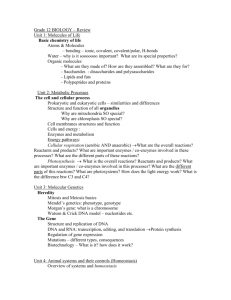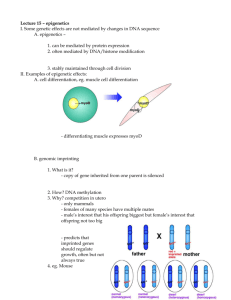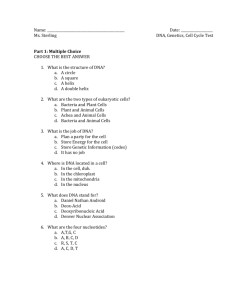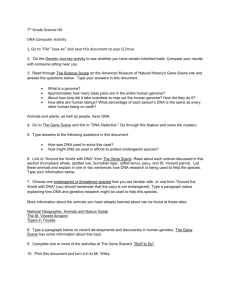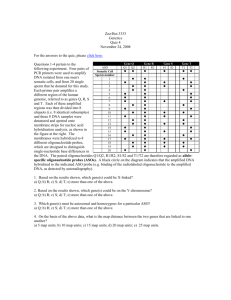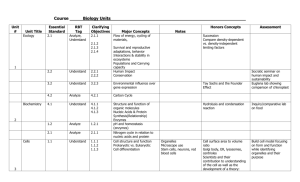Biotechnology notes
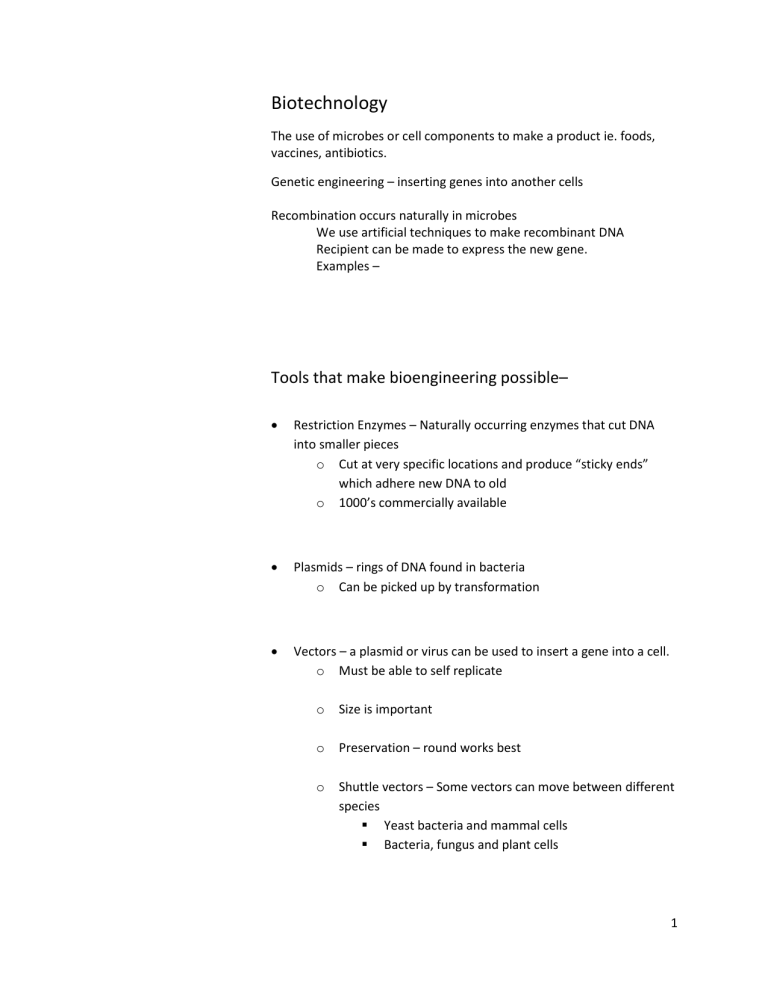
Biotechnology
The use of microbes or cell components to make a product ie. foods, vaccines, antibiotics.
Genetic engineering – inserting genes into another cells
Recombination occurs naturally in microbes
We use artificial techniques to make recombinant DNA
Recipient can be made to express the new gene.
Examples –
Tools that make bioengineering possible–
Restriction Enzymes – Naturally occurring enzymes that cut DNA into smaller pieces o Cut at very specific locations and produce “sticky ends” which adhere new DNA to old o 1000’s commercially available
Plasmids – rings of DNA found in bacteria o Can be picked up by transformation
Vectors – a plasmid or virus can be used to insert a gene into a cell. o Must be able to self replicate o Size is important o Preservation – round works best o Shuttle vectors – Some vectors can move between different species
Yeast bacteria and mammal cells
Bacteria, fungus and plant cells
1
Reverse transcriptase – an enzyme that makes DNA using mRNA as a template o DNA polymerase then makes a complimentary strand, now can be incorporated into cellular DNA
How To…..
1.
Gene of interest is inserted into vector (many steps, must be self replicating)
2.
Vector taken up by recipient cell
3.
Recipient cell clones itself (replicates)
4.
Harvest a.
If gene is expressed, simply isolate b.
Remove individual genes (can be inserted into vector and taken up by recipient cells, see step 2)
Examples…
Insulin
Hepatitis B vaccine
HIV protease inhibitors
Roundup ready crops
Gene therapy
Golden Rice
Bt Crops (Bacillus thuringiensis)
2


